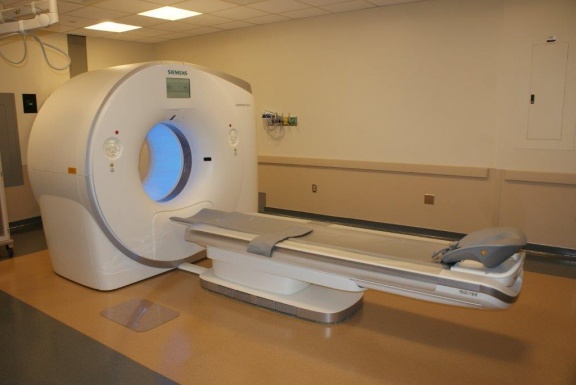The following article originally appeared in the September edition of The Reader.
In September, our department began clinical operation of a brand new, state-of-the-art Siemens Somatom Force CT scanner at Vanderbilt University Hospital. This new CT platform has expanded capabilities that enhance diagnosis and ultimately the care we deliver to our patients.
Technically, the new CT scanner is dual-source, dual energy, wide detector CT systems. One rotation of the gantry takes 0.25 seconds and each image can have a temporal resolution of 66 msec. The system is in essence a "2-in-1 CT scanner" with an "A" and "B" X-ray source that allows unparalleled options for completing an exam. What this means for our patients is dramatically lower scan times, reduced radiation exposure and reduced need for intravenous contrast media. The FORCE CT can scan a person from head to toe in less than two seconds. The scanner is also able to “freeze” motion, which allows imaging of small structures at high resolution. Moving structures that would previously be “blurred” and unrecognizable on an older CT scanner are now produced with great clarity. The ability to scan with two energies at the same time allows for precise tissue characterization and the ability to remove bones and metal artifacts that can obscure imaging of critical structures.
We are actively preparing for placing our second FORCE CT in the Emergency Department, which should be operational by early 2017. This new capability will help improve the care of critically ill patients.
Obtaining these two new CT scanners was a team endeavor with the leadership of Jeff Balser, M.D., CEO, Mitch Edgeworth, CEO of VUH, and Reed Omary, M.D., M.S., Chair of Radiology, who recognized the importance of this cutting-edge technology for our patients and the VUMC community.


